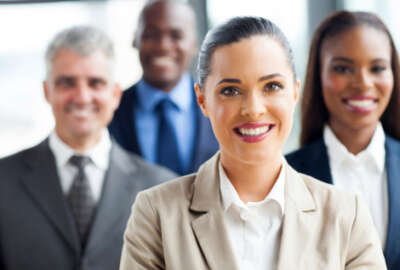
Expect more legislative oversight, different FITARA grading this year
Congress' first round of report cards on agencies' progress with the Federal IT Acquisition Reform Act is only the beginning. Agencies can expect more reports from...
Legislative oversight on agencies and their progress in implementing the Federal IT Acquisition Reform Act won’t slow down anytime soon, the Government Accountability Office said.
Agencies can expect a few changes to the way Congress grades and evaluates their progress — plus more reports and scorecards from GAO — throughout the year and into the upcoming presidential transition, said Dave Powner, director of IT issues at GAO, during MeriTalk’s FITARA Forum in Washington March 30.
“We need to work together on this,” said Powner, who reiterated the importance of congressional oversight. “It’s not about the legislative branch having this big stick and giving ‘Ds’ and ‘Fs.’ It’s about rewarding the appropriate behaviors, acknowledging the ‘As’ and looking at best practices.”
The House Oversight and Government Reform IT Subcommittee released its first FITARA scorecards in November, and the grades weren’t pleasant for most agencies. Several received a ‘D’ or ‘F,’ and not one agency earned an ‘A.’
The Office of Management and Budget approved 22 out of 24 agencies’ FITARA implementation plans, said Malissa Levesque, an OMB policy analyst. Plans from the Labor and Energy departments are not ready for publication, and those departments are working with OMB on issues unique to their respective organizations, she said.
“There’s been some thought about looking at those FITARA implementation plans and rewarding some of the agencies that have strong, robust plans and really acknowledged their challenges,” Powner said. “Perhaps they get an uptick on their grades, that’s the potential.”
Congress could also reward agencies who are making major progress on a particular aspect of FITARA.
For example, four agencies — the Agriculture, Defense, Interior and Treasury departments —have closed 84 percent of the 3,100 data centers government has shut down so far.
“Should those agencies be rewarded with potentially a higher grade because they’re doing the heavy lifting on the closures?” Powner said. “Perhaps.”
The Commerce, Defense, Homeland Security and Treasury departments have saved the most through their data optimization efforts since 2015, Powner said. Of the $2.8 billion agencies have saved to date, those four agencies are responsible for 86 percent of that total.
Congress may also call hearings on one specific department and ask that the agency’s entire C-suite to testify on FITARA implementation, Powner said.
More deadlines approaching
Agencies are on an Apr. 30 deadline to submit an update to their FITARA common baseline self-assessments to OMB.
Those assessments will look a little different this time, Levesque said. Agencies will continue to review their budget formulation, budget execution, acquisition and organizational workforce activities.
Now, OMB is sending each agency its own assessment that’s pre-populated with the scores it received during the last self-review. New assessments will help agencies indicate and explain whether they’ve improved or fallen behind, she said.
“[They have] to justify what their scores are,” Levesque said. “If they say they’re a three, what makes them a three? Do they have a great acquisition policy? Or do they have some new statute that they’re implementing at their agency?”
Self-assessments will also include space where agencies can describe their obstacles in each category and explain how they plan to overcome them.
OMB is also asking agencies to look at their specific FITARA milestones and update their progress on those, rather than rewrite their entire plans.
“What we’re really looking for is a status update,” Levesque said. “Have they completed the milestone? Are they on track? Or is it deferred?”
Self assessments don’t match GAO’s reviews
But not all of agencies’ self assessments have been accurate, said Powner, who is now studying how well agencies are implementing incremental development practices.
For example, some agencies say 78 percent of their projects are delivering results within six months. But Powner found one agency that actually delivered 32 percent of its projects in six months.
GAO is also doing its own risk ratings on 96 different large-scale acquisitions and comparing them with agencies’ CIO assessments.
“We need better accuracy on the dashboard, more acknowledgement of risk so that we can more effectively manage these large-scale acquisitions,” Powner said.
The data used to calculate agencies’ initial grades was not based on old data, Powner said, addressing some of the concerns and complaints he’s heard since Congress released the first report cards. Most of the data, which is based on the information agencies leave on the governmentwide IT dashboard and from quarterly reports they give to the appropriations committees, is one to three months old, he said.
“If you didn’t like your grades, you have an opportunity to fix it by fixing some of the data you have and what you’re actually accomplishing on savings, the percentage of your investments going small and your accuracy on the dashboard,” Powner said.
Progress made, but much more needed
CIOs generally say FITARA is giving them a better view of their agencies’ IT budgets.
“Some CIOs are saying that now that they’re starting to look at IT contracts and approve them … they have greater visibility into the contracting,” Powner said. “It’s obvious that there’s some unnecessary contracts we’re pursuing because of duplicative efforts. That doesn’t surprise me at all that CIOs are telling us that.”
Now that CIOs are being asked to certify incremental development on a specific IT project, agencies are in fact using that method more often, Powner added.
But most of the difficulties agencies have with FITARA implementation are largely cultural and stem from overall communication challenges.
For example, some bureau and component CIOs are not cooperating with their departmental leaders, Powner said, while several CFOs are worried about losing the power and authority they once had before FITARA.
“We really need to work collectively across the CX organizations to make FITARA work, he said. “It’s not about losing power. It’s about working as a team and accomplishing agency missions, so these aren’t good things and these concern us.”
Several CIOs have also told GAO that they’re being pressured to sign off FITARA plans they don’t agree with, said Powner, while many people in the room nodded in agreement.
“This is not a short-term initiative, because we have deep-rooted agency cultures that will take awhile to change,” he said. “FITARA is about building relationships: up, across and down. That’s a lot of relationships to build for these CIOs to really get the job done.”
Copyright © 2025 Federal News Network. All rights reserved. This website is not intended for users located within the European Economic Area.
Nicole Ogrysko is a reporter for Federal News Network focusing on the federal workforce and federal pay and benefits.
Follow @nogryskoWFED






